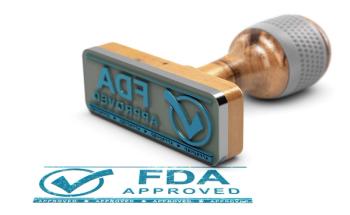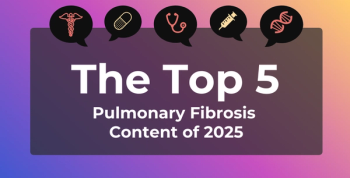
Aging Population Continuing to Drive National Health Spending, Report Says
National health spending will climb to 19.4% of gross domestic product in 2027, reaching $6 trillion, according to annual CMS estimates, with growth continued to be boosted by a greying population aging into Medicare.
National health spending will climb to 19.4% of gross domestic product (GDP) in 2027, reaching $6 trillion, according to new estimates released Wednesday from CMS and
The report, from the Office of the Actuary at CMS,
By 2027, government (federal, state, and local) will finance 47% of national health spending, CMS said.
The insured share of the population is expected to remain stable at around 90% throughout the period, as net gains in health coverage from all sources are projected to keep pace with population growth.
Prices for healthcare goods and services are projected to grow 2.5% per year, on average, faster than the average price growth experienced over the last decade, and will account for nearly half of projected personal healthcare spending growth. By sector, prices for prescription drugs aree expected to rise 2.8%, hospital services by 2.6%, and physician and clinical services by 1.8%.
Here are some trends by payer and sector:
Medicare
Medicare’s average annual spending growth—7.4%—is expected to exceed Medicaid’s 5.5%, as well as that of private health insurance (4.8%), mostly as a result of comparatively higher projected enrollment growth.
In 2019, there will faster expected growth in per enrollee spending, expected to rise to 4%. Medicare enrollment growth is expected to peak at 2.9%. Medicare’s enrollment boom will start to fall off towards the end of the period, officials said.
Medicare's spending growth is expected to have risen 5.9% in 2019, compared with 4.2% in 2017, due to fee-for-service hospital care, drug spending, and private health plan payments.
Medicaid
2018 saw a slowing in Medicaid enrollment growth, from 2% in 2017 to 1.1% in 2018. But with Medicaid expansions taking hold this year in Idaho, Maine, Nebraska, Utah, and Virginia, the report said that 2019 will see the first increase in enrollment growth, to 2.4%, since 2014.
Between 2020 and 2027, there will be continued acceleration and per enrollment growth, averaging 4.8%, due to an enrollment mix weighted by more aging and disabled patients, who are more expensive to care for.
That will be offset by slower projected growth and enrollment to 1.2%.
Private insurance
2019 spending growth is projected to slow because of expected enrollment declines in the individual market, reflecting the estimated impact of the effect of repealing the individual mandate. Spending growth in 2019 will drop to 3.3% and then begin rising to 5.1% over the 2020-2027 time frame.
Per enrollee growth is expected to average 4.7%, while enrollment growth is expected to average 4%.
Out-of-pocket trends during the time frame will accelerate because of fewer people having private insurance coverage. In 2022, out-of-pocket spending is expected to grow to 5.4% related to the excise tax on high-cost insurance plans.
The excise tax, also called the “Cadillac tax,” is a 40% excise tax on employer plans exceeding $10,200 in premiums per year for individuals and $27,500 for families. The tax is scheduled to take effect in 2020.
Prescription Drug Trends
Overall, during the period, there will be spending growth of 5.6% between 2018 and 2027, and price growth of 2.8%. Generics have helped slow down drug price growth, officials said on a call discussing the report.
In addition, drug spending as a share of GDP is expected to rise from 1.9% by 2027, up from 1.7% in 2017.
Faster utilization growth, driven by new drug introductions, are a factor here—there were 59 new drug introductions in 2018, versus 46 in 2017.
2019 will see a modest increase in drug price growth as higher utilization continues. Between 2020 and 2027, utilization will pick up further, both from new drug approvals and higher than expected use, as employers and insurers encourage patients with chronic diseases to use medication through methods like $0 co-pays and autorefills.
Hospital Trends
Hospital spending growth is also expected to rise 5.6% between 2018 and 2027, due to both higher hospital payments in Medicare and Medicaid expansion. However, it will be offset by the end of the individual mandate and slower than expected growth in private insurance. Hospitals will also experience wage growth and a tighter labor market. Hospital price growth during the period will be similar to drug price growth at 2.6%, officials said.
Physician and Clinical Services
Spending in this category is expected to grow 5.4% over the period, partly because of faster price growth between 2020 to 2027. Price growth in this category is expected to be 1.8%. In addition, officials cited rising wage growth, which has been lower and is expected to rise, driven partly by increased services needed by an aging population.
The report makes the assumption that current policy and law will continue, and on a call discussing the results, officials did not weigh in heavily on some factors behind the numbers. For instance, prescription drug price growth last year was estimated to be 6.6%, but the current report projected 2018 drug price growth at 3.3%. Officials said the reasons for the difference from year to year could be changes in macroeconomics, changes in policy, or industry changes.
Newsletter
Stay ahead of policy, cost, and value—subscribe to AJMC for expert insights at the intersection of clinical care and health economics.







































